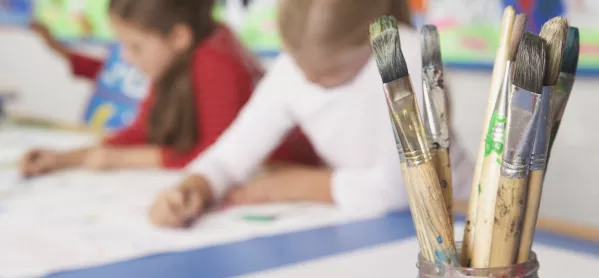- Home
- ‘EBacc means the arts are absent in the curriculum for the vast majority - and this is wrong’
‘EBacc means the arts are absent in the curriculum for the vast majority - and this is wrong’

The English Baccalaureate has reinforced a hierarchy of subjects in secondary schools, with English and maths at the top and the arts at the bottom. To some extent, this hierarchy has always been present in the curriculum planning of many schools, with the arts allocated a smaller amount of teaching time than the core subjects. As long as the EBacc survives, however, the arts will not feature on the curriculum of the vast majority of 14- and 15-year-olds, and that is wrong for the pupils and wrong for society.
A couple of weeks ago, a group of playwrights and actors, including Meera Syal and Zoë Wanamaker, called on the government to include the arts in the EBacc list of subjects. An online petition, started by drama teacher Richard Wilson, attracted over 100,000 signatures, the threshold to trigger a debate in Parliament on the decline in arts education.
In 2015, the Warwick Commission report on the state of the arts said that between 2003 and 2013 there was a 50 per cent drop in GCSE entries for design technology, a 23 per cent fall for drama and a 25 per cent drop for other craft-related subjects. In 2012-13, only 8 per cent of students combined arts and science at AS level. The number of arts teachers in schools fell by 11 per cent between 2010 and 2015, and in secondary schools where a subject has been withdrawn for 14- and 15-year olds, drama and performance has dropped by 23 per cent, art by 17 per cent and design technology by 14 per cent.
The report highlighted the importance of the arts not only in the life of the nation but also in the economy, with the sector valued at £76.9 billion, or 5 per cent of the economy. The artist Bob and Roberta Smith said that CP Snow’s observation in his “The Two Cultures” lecture of 50 years ago - that society was split into science and the humanities - had been made “irrelevant by the emergence of the power of digital technology” and that “we must totally overhaul the importance of art, design, dance, craft and drama, and teach them in a more contemporary and computer-literate way to every child so that we do not deny our young people access to a £76.9 billion economy.”
The Warwick Commission noted that arts audiences are overwhelmingly middle-class and white, with low participation from most ethnic minorities, lower social groups and people who struggle financially. This is a good reason why the role of schools is so important in the arts, and why arts education should be an entitlement for all children and young people. In the words of the arts broadcaster Melvyn Bragg, “investment in the creative arts is the key to the lives of so many people in this country, and to the richer life of the country itself”.
Andrew Lloyd Webber has just given £1.4 million to London schools to pay for musical instruments and lessons in the capital, a sum matched by the Charles Wolfson Charitable Trust. That’s great for children in London, but in places like Lincoln, Liverpool and Lichfield, and in rural areas where there is particularly poor access to the arts, the need is even greater and the responsibility falls squarely on schools.
Good schools emphasise the arts
I have never been into a really good school that does not emphasise the importance of the arts, with wonderful displays of art in the foyer, frequent music and drama performances and a strong place in the curriculum. These schools know that, while much of what is learned at school gets forgotten, the experiences that children have in the arts stay with them throughout their lives.
Many schools use some of their pupil premium funding on the arts, giving children from disadvantaged backgrounds access to music and the other arts, by hiring musical instruments, paying for individual and group tuition, paying for visits to galleries and other arts events. This is an important part of levelling the playing field for children who do not have these opportunities at home.
One of the first decisions I made when local management of schools was introduced in 1990 and the school had control of the budget was to spend some money each term on an artist-in-residence scheme, which brought to Durham Johnston School, where I was head, a rich and varied group of artists. The cost was very small, but the presence of poets, painters, sculptors, a glass blower, playwrights, composers, a ceramicist, writers and more, enhanced the life of the school and sent a strong message to the students about the importance of the arts. Both students and teachers learned a lot from these professionals.
There are many career opportunities for young people in the arts, which they will be less likely to access without a good grounding in arts subjects and the opportunity to take them to GCSE and A level.
The government prioritises Stem subjects (science, technology, engineering, maths). It is time that Stem became Steam.
John Dunford is chair of Whole Education, a former secondary head, general secretary of the Association of School and College Leaders and national pupil premium champion. He tweets as @johndunford
Want to keep up with the latest education news and opinion? Follow TES on Twitter and like TES on Facebook
Keep reading for just £1 per month
You've reached your limit of free articles this month. Subscribe for £1 per month for three months and get:
- Unlimited access to all Tes magazine content
- Exclusive subscriber-only stories
- Award-winning email newsletters



